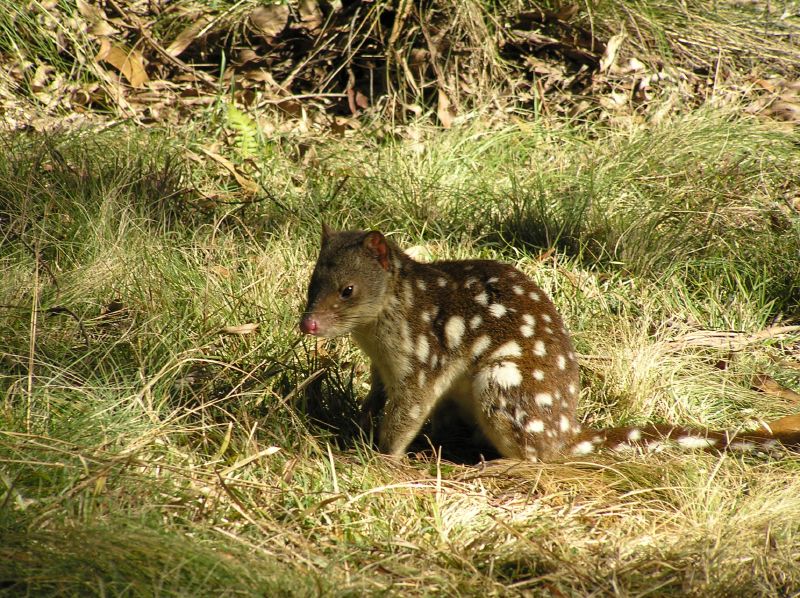Conservation of the spotted-tailed quoll across the Wet Tropics mountains
Autor: Adriana Uzqueda, James Cook University
The northern sub-species of the Spotted-tailed Quoll (Dasyurus maculatus gracilis) is the top marsupial carnivore in the Wet Tropics. The subspecies is genetically divergent, highly isolated, and restricted to high elevation rainforest of the Wet Tropics mountains. It is listed as Endangered at both the federal (EPBC) and state (NCA) level.
Dasyurus m. gracilis has declined substantially due to various threats (e.g. habitat loss, invasive species, poison baiting) and only appears to survive in five small, disjunct areas across the central and northern Wet Tropics mountains (Wooroonooran NP, Lamb Ra, Carbine Tbld, Windsor Tbld, Thornton Peak). Declines continue in some of these populations, and climate change is an added current/future threat.
For effective management it is vital that we understand the history of decline and the contributing factors, the degree of genetic structuring and connectivity among the subpopulations, and the likely future refugia and corridors for connectivity between populations.

This project will assess population decline and connectivity in two ways – through distributional modelling and through genetics. This will provide vital information to facilitate the conservation and management of this key Wet Tropics species.
The results of this research will be directly useful to protected area managers (e.g., QPWS, WTMA, AWC) and the Queensland and Federal Governments. Understanding the history, recent decline and current connectivity of populations will enable the following conservation outcomes:
- Predict the future distribution of this species under various climate change/threat scenarios
- Identify which populations are currently isolated or connected
- Identify particularly important populations in terms of genetic isolation or connectivity
- Identify particularly important areas for current and future persistence
- Identify particularly important pathways for historic, current and future connectivity
- Identify how connectivity will change with predicted future distributional changes, or with the continuation or removal of key threats
- Provide basic data on how genetically distinct each population is for future considerations regarding captive breeding and reintroductions.
